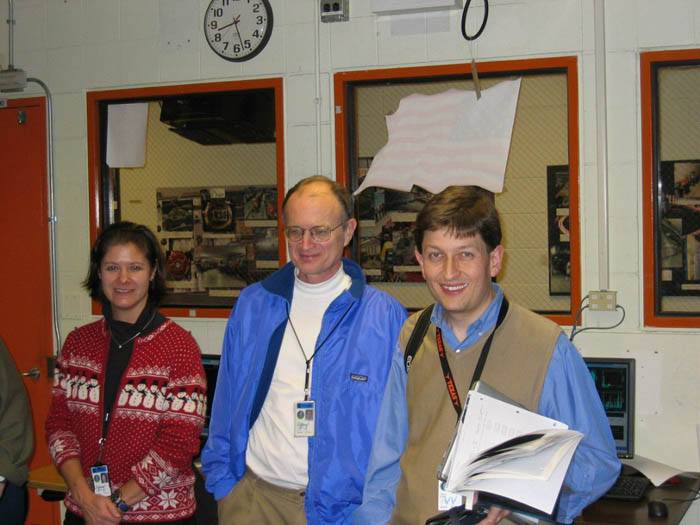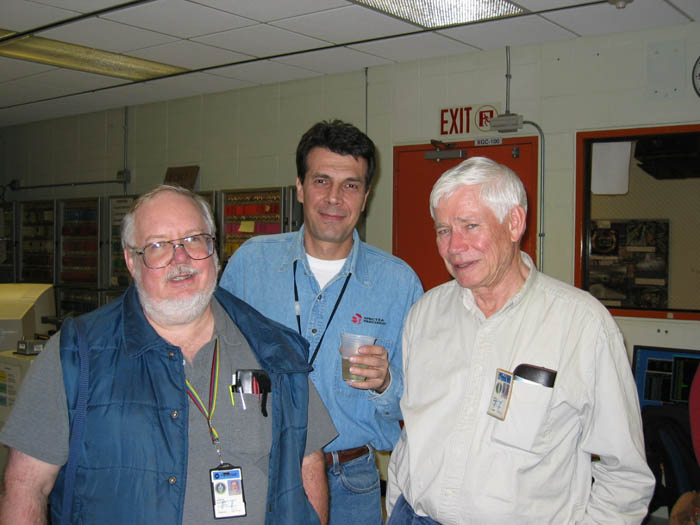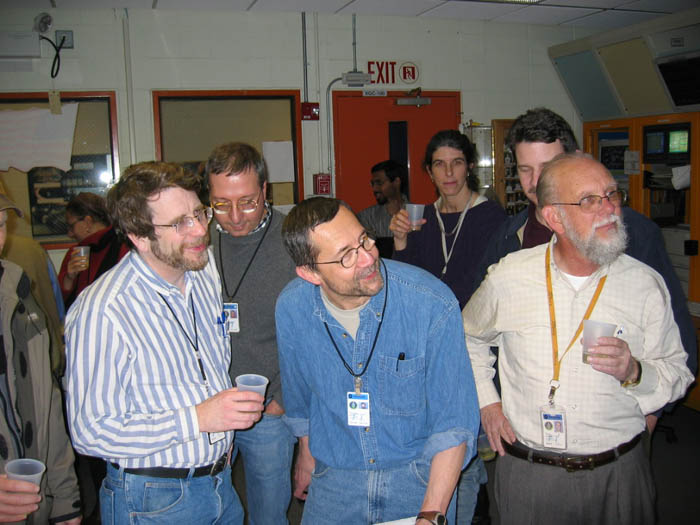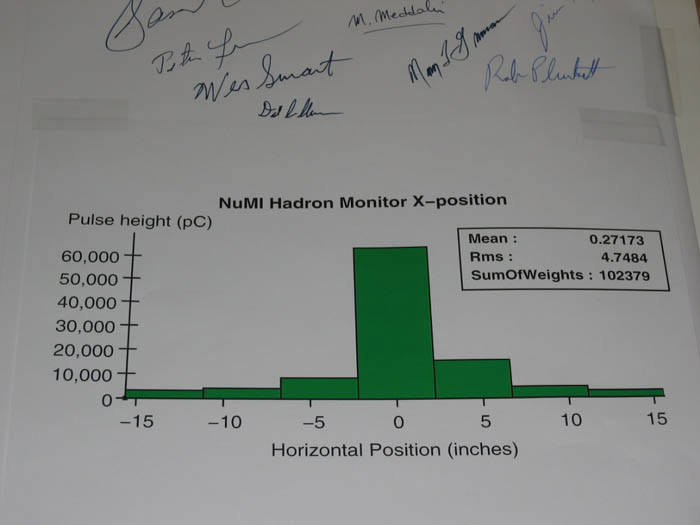First NuMI Beam from Main Injector
In a major milestone for the NuMI Project, on Friday, December 3 at 6:40 p.m., NuMI collaborators extracted a beam of protons from the Main Injector and centered it on a downstream particle detector for the first time. Shortly thereafter, a crowd of experimenters and employees gathered in the Main Control Room to celebrate this remarkable achievement.
Just 10 hours earlier at 9:00 a.m., more than 20 physicists and engineers had begun setup and testing of the NuMI beamline in the Main Injector. Using a low-intensity beam -- about 100 times less intense than the actual NuMI beam will be -- it took only 10 pulses to extract the beam from the Main Injector, transmit it through the NuMI beamline into the target hall and send it 700 meters further down the line.
The day began with a check-out of the critical devices essential for a successful extraction, leading to the arrival of beam at the primary transport on the first pulse. A careful process of small magnet current adjustments followed, with the beam reaching the end of the pretarget enclosure by pulse # 8. On pulse #10, the beam was centered at the beam stop more than 1 km from the Main Injector extraction point.
The active participation of experts for each primary beam system made this initial beam commissioning a success.
"The goal of this test was to make sure that there weren't any big problems with the NuMI beamline in the Main Injector tunnel, and we achieved our goal," said NuMI Department Head Bruce Baller. "A real achievement is the fact that the instrumentation worked well on the first pulse, and all of the magnets worked with the correct polarity, not to mention that the alignment was correct within a few millimeters."
This major accomplishment is the culmination of the efforts of a very large group of dedicated people from several different Fermilab divisions and many institutions who have worked on the project - some beginning as long as 10 years ago.
Although sending primary beam to the beam stop is a major feat for the NuMI experiment, much work remains before the experiment begins operations in early 2005. Workers must still complete the target hall and install cooling systems for the neutrino horns.
"We still have a lot of work to do," said Sam Childress, manager of the NuMI primary beam system. "But when everything works well initially, it provides a good indication for the future also. It is a very good sign that everyone has done their work well, and the real pay-off will be the neutrino physics we can do for years to come."








